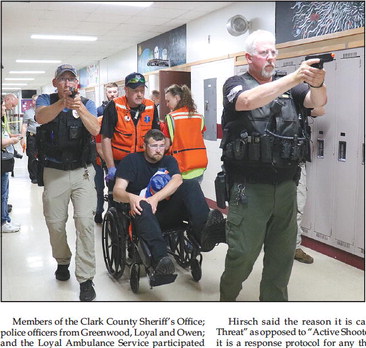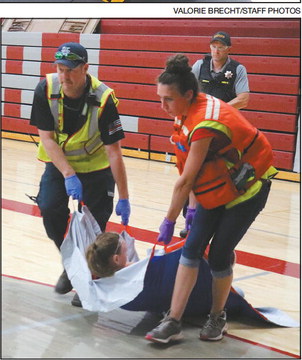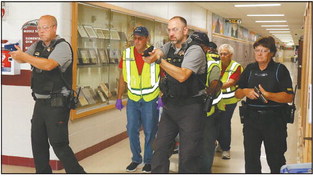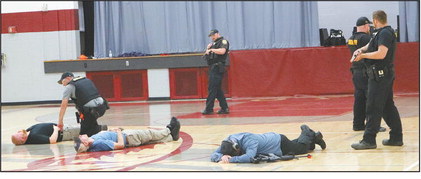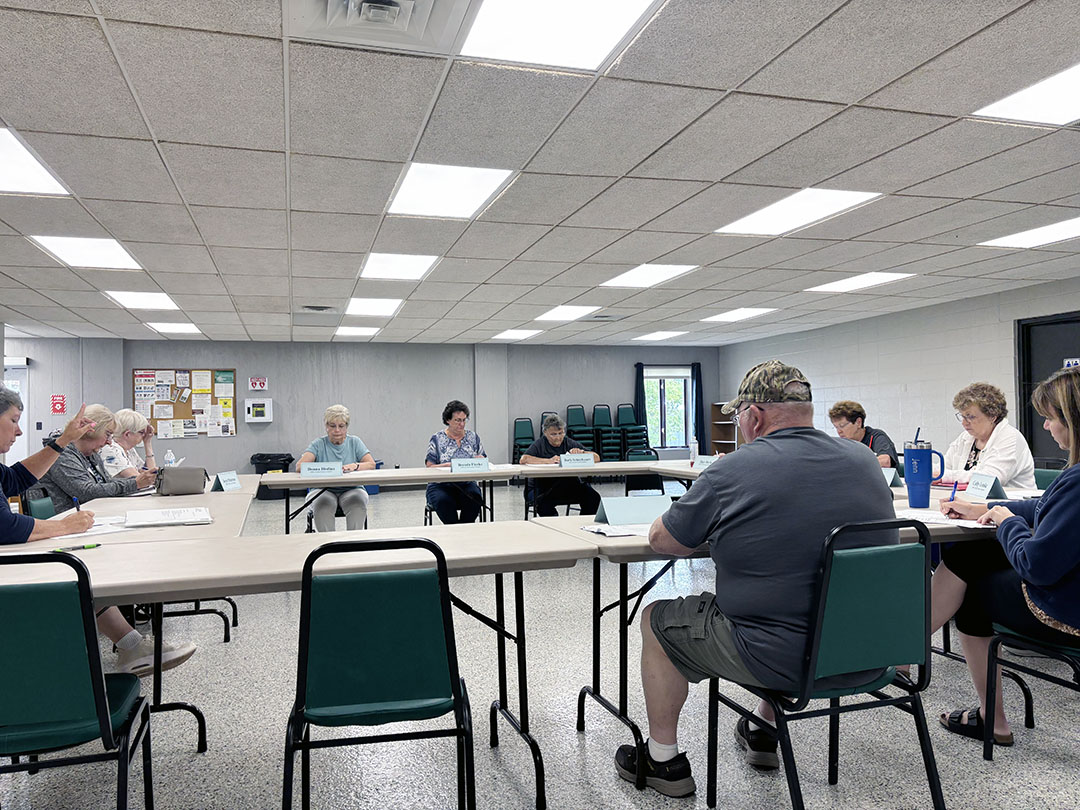PrepariNg foR the UNthinKable
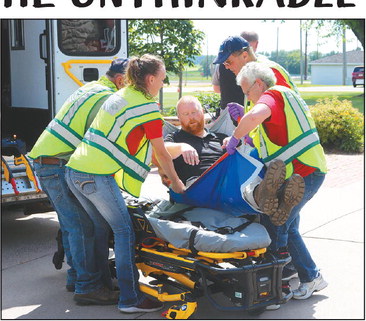

Shown in the upper right photo is Dave Esselman (back left), along with Jennifer (front left), Rick and Margie Szymanski (right) transferring “victim” Patrick Fehlman onto a cot at the active shooter simulation last Thursday at the Loyal High School. Top left, the rescue task force escorts the “victim” to safety. Middle right, the team uses their equipment to transport one of the injured. In the bottom left photo, officers lead the way to safety for medical personnel as they carry out “victims” during training, while at bottom right, officers work to clear an area during a drill.
Members of the Clark County Sheriff’s Office; police officers from Greenwood, Loyal and Owen; and the Loyal Ambulance Service participated in an active shooter simulation at Loyal High School on Tuesday and Thursday last week. They spent the morning in classroom sessions and the afternoon running through scenarios involving the shooter being in different locations and with different casualties each time. The person playing the shooter fired off blanks and the people playing the victims, of varying ages, were labeled with index cards describing their injuries or if they were deceased.
On Thursday, participants went through about six different scenarios. After each scenario, they had the chance to debrief and talk about what went well and areas for improvement.
Officers rotated through being part of the contact team or the rescue task force. The contact team consists of the initial responding officers; their purpose is to go toward the sound of gunfire and neutralize the threat. The rescue task force goes with the ambulance personnel and their sole purpose is to save the victims from dying.
The sheriff’s office hosted the training and invited other agencies to participate. Their first training took place about 10 years ago at the Abby school, after Chief Deputy Jim Hirsch was trained in Active Threat Integrated Response (ATIR) and became a certified tactical threat instructor through the Department of Justice. Now, he leads other members of his department through ATIR training.
Hirsch said the reason it is called “Active Threat” as opposed to “Active Shooter” is because it is a response protocol for any threat, such as someone swinging a sword around, not solely a shooter. The “Integrated Response” part means it incorporates ambulance, fire and EMS personnel, not just law enforcement. For example, in an active threat situation, fire department trucks could be used to block the roadway and keep people away from the potential danger.
In Wisconsin, although police officers have to complete active threat training while they’re in police academy, it’s not part of their mandatory annual trainings.
“Some counties don’t do this training, and you hear in the news that they only get it in the police academy and that was 30 years ago,” said Hirsch.
He felt it was important to offer this training to his officers annually, though, to keep them aware of the latest protocol and offer more repetitions of training they hope they never have to use.
Hirsch also mentioned that schools are required statutorily to have an active threat protocol, although the state does not detail what exactly that protocol has to be. Schools are also required to conduct regular drills for such a situation.
Hirsch said although his department had trained in schools, they would be open to conducting such a training in a business if there was interest. He expressed his appreciation to the Loyal School District for use of the facility, to the volunteers who played victims and to the participants.
VALORIE BRECHT/STAFF PHOTOS
